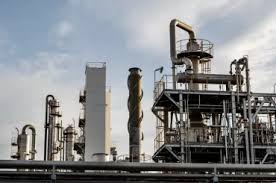If you’ve been in the tank inspection or maintenance world for a while, you already know one thing: standards never stand still. Just when you feel like you’ve got API 653 inspection code memorized, the latest edition rolls out and suddenly you’re flipping through pages with sticky notes again. And the most recent revision? Let’s just say it’s not something engineers and operators can ignore.
API 653—the code that governs inspection, repair, alteration, and reconstruction of aboveground storage tanks—just got a refresh. And like any good update, it’s got a mix of clarity, stricter rules, and a few curveballs that are going to make people rethink how they handle their tanks.
So, What’s New?
The latest edition digs deeper into a few areas that were either a little fuzzy before or simply needed to catch up with today’s realities.
- Stricter inspection intervals: The new edition puts more emphasis on timely inspections, especially for older tanks. If you thought you could stretch intervals to the max, you’ll need to double-check the fine print.
- Corrosion allowances: This is a big one. The rules around corrosion evaluation and repair thresholds have been tightened, making it harder to push borderline tanks along without real action.
- Repairs and alterations: There’s sharper language on what qualifies as a repair versus an alteration, and the required documentation is heavier. Not the fun part, but absolutely necessary if you want to stay compliant.
- Integration with modern inspection tools: The standard finally leans into newer non-destructive testing (NDT) methods and robotics. For years, inspectors have been using these tools in practice, but now the code itself is clearer about how they fit into compliance.
Why These Changes Matter
On the surface, updates to a standard might feel like bureaucracy at work. But here’s the thing: storage tanks are aging fast, and some of them are sitting on decades of service life. That means higher risks of leaks, product loss, or worse—environmental disasters.
By tightening the rules, API is basically saying, “Look, the old way of doing things isn’t enough anymore. We need to hold everyone to a higher bar.” And honestly, they’re right. If you’ve ever walked a site and seen the underside of a neglected tank, you know how scary the thought of a failure can be.
Engineers on the Frontline
For engineers and API inspection companies, these changes aren’t just paperwork. They change the day-to-day way you plan inspections, manage budgets, and make calls on repairs. Some folks might see it as more red tape, but the reality is this: adapting quickly keeps tanks safe, companies compliant, and people out of trouble with regulators.
It’s also about reputation. A company that’s known for staying ahead of compliance, rather than dragging its feet, builds trust with both regulators and the public. Nobody wants to make the evening news because of a tank failure that “could’ve been prevented.”
The Growing Role of Tech
One interesting piece here is how API 653 now acknowledges the role of technology more explicitly. Robotic crawlers, drones, advanced sensors—these are no longer “nice-to-have” tools, they’re becoming part of the compliance conversation. That’s huge for engineers, because it means inspections can be safer and less disruptive.
Imagine being able to collect real-time thickness data or corrosion mapping without draining a tank. That’s not science fiction anymore; it’s happening. And now, the code recognizes it.
The Bottom Line
The latest edition of API 653 isn’t about making life harder for engineers and operators—it’s about facing reality. Tanks are aging, risks are higher, and the cost of doing nothing has never been greater. If that means inspections happen more often, repairs are more strictly defined, and reports pile up a little taller on your desk, so be it. The payoff is fewer accidents, more reliability, and a stronger industry standard that keeps everyone accountable.
FAQs
Q: Why does API keep changing the 653 standard?
A: Because the industry keeps changing. Tanks are aging, new technologies are available, and risks evolve. The updates are meant to keep safety and compliance up to date with real-world conditions.
Q: How often do I need an inspection now?
A: It depends on your tank’s age, condition, and service history. The new edition tightens the intervals for older or higher-risk tanks, so you’ll likely be scheduling them sooner than before.
Q: Do I need to switch to robotic inspections?
A: Not necessarily, but the standard now recognizes these methods as valid tools. That means you can use them to make inspections safer and more efficient while still meeting compliance.
Q: What’s the biggest challenge for engineers with the new edition?
A: Adjusting to stricter corrosion and repair rules. There’s less wiggle room, so engineers will need to be more proactive in decision-making.
Q: Is this going to cost operators more money?
A: In the short term, probably yes—more inspections and tighter repair standards mean more upfront spending. But in the long run, it’s cheaper than cleaning up a spill or dealing with regulatory penalties.
At the end of the day, the new API 653 is a wake-up call: the old pace of inspections and the “we’ll deal with it later” mindset just won’t cut it anymore. Engineers who adapt quickly will keep things running smoothly—and maybe even sleep better at night knowing their tanks are safer for it.
